
Harewood House is a country house in Harewood, West Yorkshire, England. Designed by architects John Carr and Robert Adam, it was built, between 1759 and 1771, for Edwin Lascelles, 1st Baron Harewood, a wealthy West Indian plantation and slave owner. The landscape was designed by Lancelot "Capability" Brown and spans 1,000 acres at Harewood.

Sir James Phillips Kay-Shuttleworth, 1st Baronet of Gawthorpe Hall, Lancashire, was a British politician and educationist. He founded a further-education college that would eventually become Plymouth Marjon University.

Baron Shuttleworth, of Gawthorpe in the County Palatine of Lancaster, is a title in the Peerage of the United Kingdom. It was created on 15 July 1902 for the Liberal politician Sir Ughtred Kay-Shuttleworth, 2nd Baronet. Both his sons were killed in the First World War and he was therefore succeeded by his grandson, the second Baron. However, both he and his brother, the third Baron, were killed in action during the Second World War. On the death of the third Baron in 1942 the titles passed to his first cousin, the fourth Baron, who survived the Second World War although he was badly wounded. As of 2017 the titles are held by the latter's son, the fifth Baron, who succeeded in 1975. He had been Lord Lieutenant of Lancashire from 1997, to 2023.
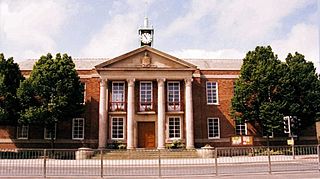
Padiham is a market town and civil parish on the River Calder, in the Borough of Burnley in Lancashire, England. It is located north west of Burnley, and north east of the towns of Clayton le Moors and Great Harwood. It is edged by the foothills of Pendle Hill to the north-west and north-east. The United Kingdom Census 2011 gave a parish population of 10,098, estimated in 2019 at 10,138.
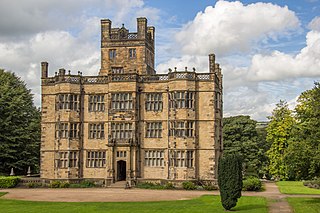
Gawthorpe Hall is an Elizabethan country house on the banks of the River Calder, in Ightenhill, a civil parish in the Borough of Burnley, Lancashire, England. Its estate extends into Padiham, with the Stockbridge Drive entrance situated there. The house is traditionally attributed to Robert Smythson. In the mid-19th century, the hall was rebuilt by Charles Barry, the architect of the Houses of Parliament. Since 1953 it has been designated a Grade I listed building. In 1970 the 4th Lord Shuttleworth gave the hall to the National Trust, with a 99-year lease to Lancashire County Council. Both bodies jointly administer the hall and in 2015 the council provided £500,000 funding for restoration work on the south and west sides of the house.
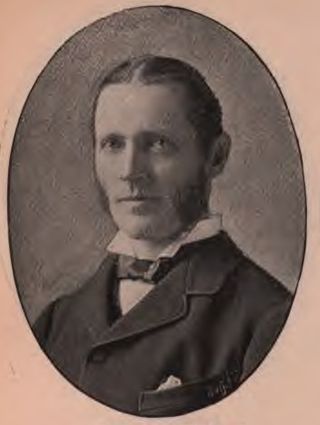
Ughtred James Kay-Shuttleworth, 1st Baron Shuttleworth,, known as Sir Ughtred Kay-Shuttleworth, 2nd Baronet between 1872 and 1902, was a British Liberal politician and landowner. He was Under-Secretary of State for India and Chancellor of the Duchy of Lancaster under William Ewart Gladstone in 1886 and Parliamentary and Financial Secretary to the Admiralty under Gladstone and Lord Rosebery between 1892 and 1895.

Ightenhill is a civil parish in the Borough of Burnley in Lancashire, England, with a population of 1,975.
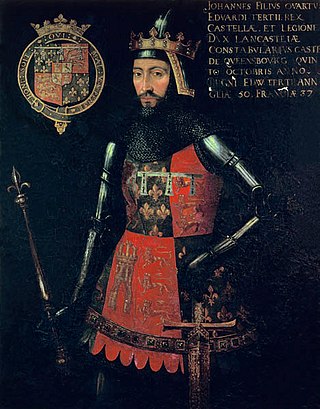
The High Sheriff of Lancashire is an ancient office, now largely ceremonial, granted to Lancashire, a county in North West England. High Shrievalties are the oldest secular titles under the Crown, in England and Wales. The High Sheriff of Lancashire is the representative of the monarch in the county, and is the "Keeper of The King's Peace" in the county, executing judgements of the High Court through an Under Sheriff.

Shuttleworth College, formerly Gawthorpe High School, is a mixed 11–16 foundation secondary school located in Padiham, Lancashire, England.

Charles Geoffrey Nicholas Kay-Shuttleworth, 5th Baron Shuttleworth, is a British hereditary peer. He is the son of Charles Ughtred Kay-Shuttleworth, 4th Baron Shuttleworth, and his wife, Anne Elizabeth Phillips.
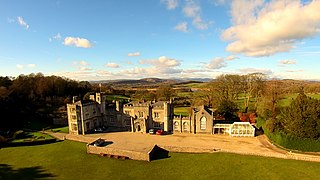
Leighton Hall is a historic house 0.5 miles (1 km) to the west of Yealand Conyers, Lancashire, England. It is recorded in the National Heritage List for England as a designated Grade II* listed building.

Carr House is a 17th-century house within the Bank Hall Estate, half-way between the villages of Tarleton and Much Hoole at the extreme north-west of the village of Bretherton, Lancashire, England. The building faces south to the Bretherton road, from which it stands back some distance, and has a foreyard inclosed on the west side by farm buildings.

Shuttleworth Hall is a 17th-century manor house in the civil parish of Hapton in Lancashire, England. It is protected as a Grade I listed building.

The Mansion House, Old Warden Park is a 19th-century country house in Old Warden, Bedfordshire, England. Designed by Henry Clutton for Joseph Shuttleworth, it is a Grade II* listed building.

Ashton Hall is a largely rebuilt 14th-century mansion in the civil parish of Thurnham, Lancashire, England. It is 3 miles (4.8 km) south of the city of Lancaster and is on the east bank of the River Lune. It is recorded in the National Heritage List for England as a Grade I listed building, and is now owned by Lancaster Golf Club.
James Shuttleworth was an English Member of Parliament and High Sheriff of Yorkshire.

Forcett Hall is an English country house in the village of Forcett, North Yorkshire, England, some 6.5 miles (10 km) west of Darlington. It is a Grade I listed building.

Richard Shuttleworth of Gawthorpe Hall, Lancashire and Forcett Hall, Yorkshire was an English Tory politician who sat in the English and British House of Commons for 44 years from 1705 to 1749. He was considered Whimsical as he occasionally failed to support his party.

The Hon. Rachel Beatrice Kay-Shuttleworth MBE (1886–1967) was an English embroiderer, lace-maker, textile collector, teacher and philanthropist. Her textile collection is held at Gawthorpe Hall in Burnley, Lancashire, her family home.
Richard Ughtred Paul Kay-Shuttleworth, 2nd Baron Shuttleworth was a British officer of the Royal Air Force, peer, and landowner, and a member of the House of Lords from 1939 until his death eight months later.




















